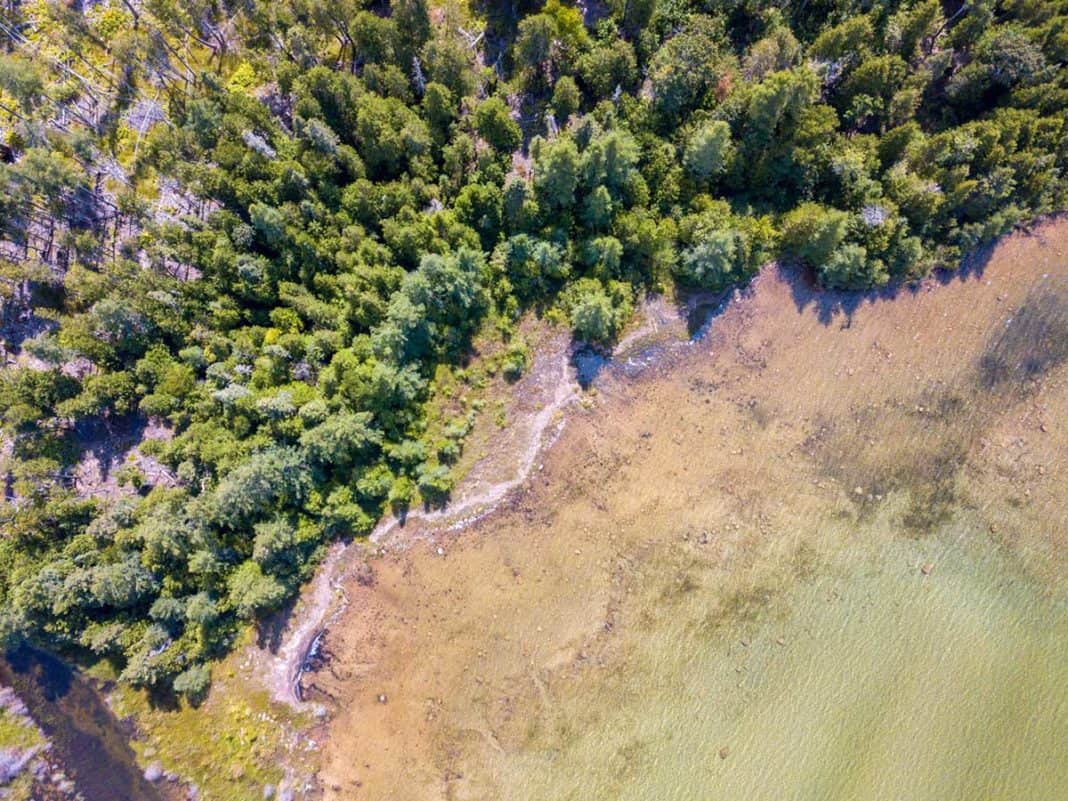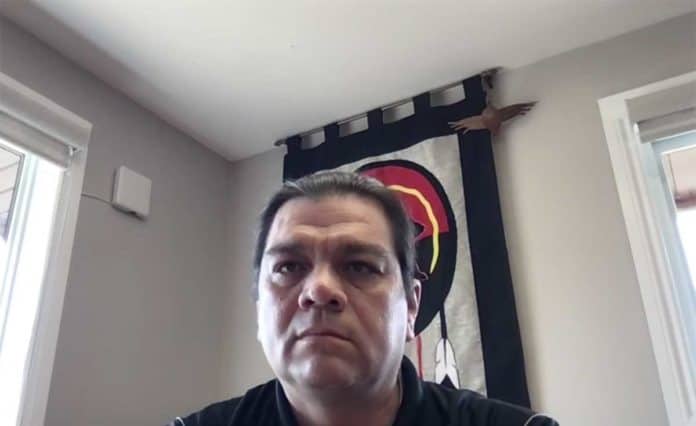MANITOULIN – Nature Conservancy of Canada (NCC) hosted a virtual event to share information on its recent purchase of Vidal Bay. While specific plans are not available, presenters provided an overview of what the planning and conservation phases will look like moving forward.
Planning occurs at three different scales: the ecoregion, the natural area and then property, said Mhairi McFarlane, NCC’s director of science and stewardship in Ontario with the ground or property level feeding up through the other levels for a holistic landscape plan. The Manitoulin Island archipelago area (MIAA) is a very special place, the NCC noted, and it plans to undertake a detailed analysis on Vidal Bay to understand what the most effective conservation work will be.
“Our planning process is dynamic, not static,” she said. “We’re still subject to opportunity and when willing landowners want to work with us. Protecting and restoring these habitats is the best way to maintain improved water quality for people to drink, work and play in. Not only is clean water important for people it’s also essential for many plants, birds and animals who also depend on it to survive and raise their young. This comes full circle back to people. So many of us get so much pleasure from being able to see animals and nature. Everything starts, of course, with an opportunity to protect large contiguous tracts of land which is quite rare for Northern Ontario. Large tracts like Vidal Bay allow animals like black bears to move freely in their quest for suitable habitat throughout their life cycle. This is becoming increasingly important with climate change.”
Esme Batten is NCC’s program director for mid-western Ontario. “This is an amazing opportunity to protect Vidal Bay,” she said. “Like most conservation projects we undertake at NCC, they’re ever evolving and changing. Our securement is strategic and science-based, led by our landscape conservation plan, it’s also opportunistic. We don’t often get to work with conservation at this scale.”
Vidal Bay is a conservation story over 20 years in the making. Vidal Bay, Queen Elizabeth the Queen Mother Mnidoo Mnising Provincial Park (Queen Mum) and Cockburn Island were long considered to be globally significant as the best remaining examples of globally rare alvars in North America while providing critical habitat for other species. Queen Mum was protected in the 1990s and NCC began protecting Cockburn Island in 2012. These three combined conserved tracts represent a protected area complex of 250 square km, or over 24,000 hectares (the largest of its kind south of the Canadian Shield in Ontario). It will conserve an astonishing 86 km of Great Lakes shoreline, more than twice what is currently protected at the Bruce Peninsula National Park, said Ms. Batten.
Islander Megan Bonenfant is NCC’s new co-ordinator of conservation biology for mid-western Ontario. She is responsible for on the ground management of NCC’s portfolio of lands on Manitoulin Island and on the Saugeen Bruce Peninsula. “I’ll be co-ordinating the stewardship of NCC’s properties and the Manitoulin Island archipelago’s natural areas, including Vidal Bay,” she told attendees. “I honestly can’t imagine a more exciting time to be joining NCC. I live here on Manitoulin and to be part of stewarding this incredible piece of land here at home, it really doesn’t get any better than that.”
Stewardship means managing the lands over the long term and can include such activities as securing habitat, monitoring for species at risk, removing invasive species, maintaining trails, installing signage and any other actions that help nature be nature, explained Ms. Bonenfant. “Each and every property we protect is monitored and managed so that ecosystems are maintained and species thrive.”
Before determining what actions to take on a particular property, NCC first collects data and makes a plan, she added. “We collect as much data as we can and make what we call a baseline inventory. Prior to field season, we collect information from existing databases and field publications as well as local knowledge about a property’s past and current use. Things like habitat use, known species, any existing structures or trails. Then we head on-site to ground proof the information we’ve already collected and add to that knowledge.”
Ms. Bonenfant will spend much of this year surveying Vidal Bay to learn more about its story. She hopes to learn from local First Nations and communities about the historical and traditional uses and stewardship of Vidal Bay. “At NCC we recognize that we have conservation expertise through a specific lens but there are other ways of knowing and we have more to learn,” she said. “We could spend years inventorying this incredible property and still not capture everything so that’s not our ultimate goal. We’ll collect as much data as we can in the first year to inform the development of a property management plan or a PMP.”
“Annual monitoring is a critical component of every PMP and we adapt our actions as needed based on the results of our monitoring and any new information we gain along the way,” she continued. “We can’t say for sure what Vidal Bay’s plan will be at this point because we’re just beginning the information gathering process.”
“Lastly, we can’t talk about stewardship without talking about people,” Ms. Bonenfant continued. “We rely heavily on our local partners to help work with us every step of the way, from collecting baseline inventory data to sharing their stories to getting into the mud with us to eradicate invasive species. We may need to shift activities away from certain locations, like moving trails out of sensitive habitat, but we realize that in order to get people to care for the land they have to feel connected to it and that means spending time with it. Getting people out there, fostering a love for nature, rediscovering their places within it can only strengthen whatever conservation successes we might have at Vidal Bay. I can’t wait to see what we can accomplish together.”





